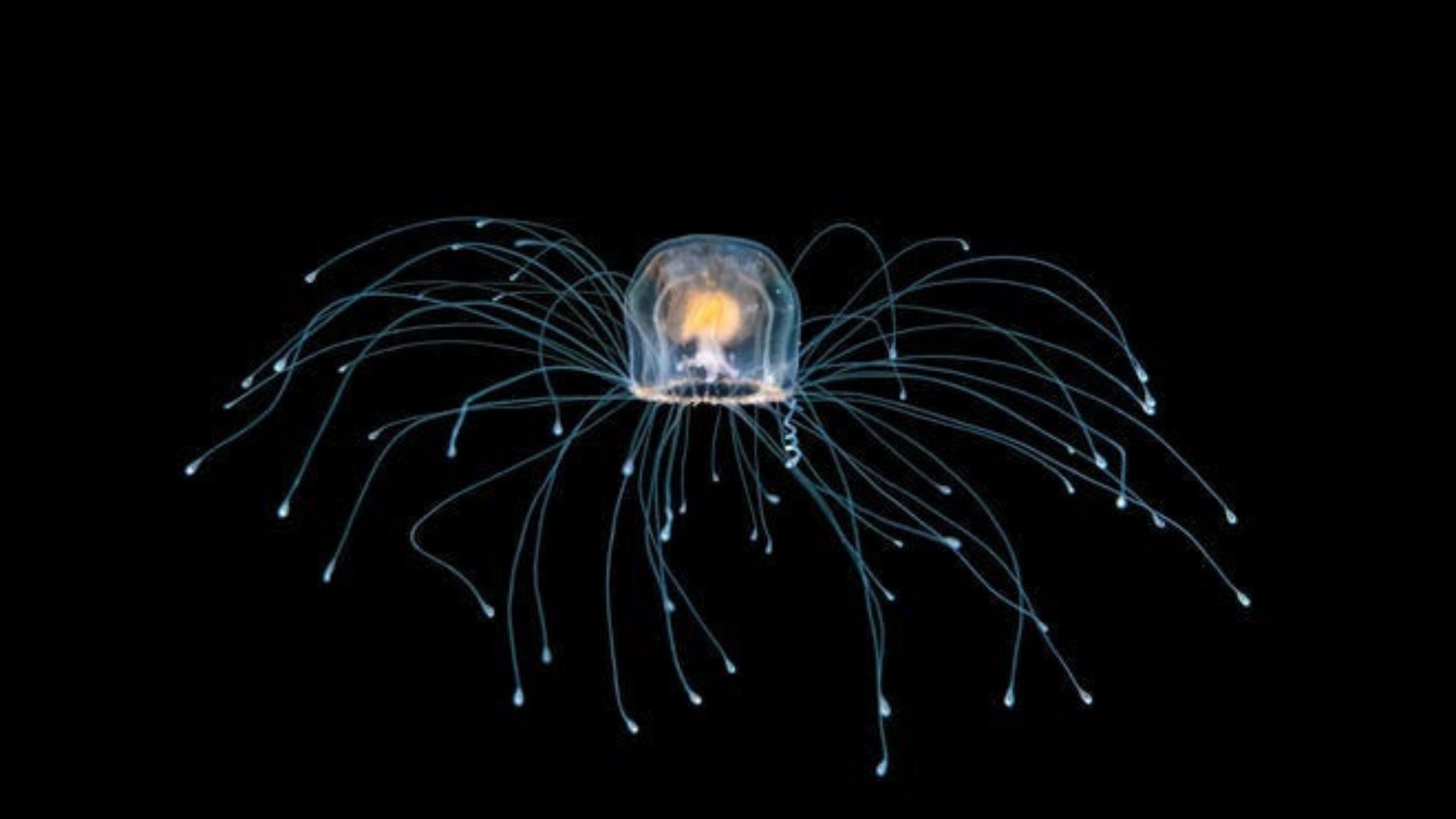The pursuit of eternal life has captivated humanity across ages, driving exploration from religious beliefs to scientific fields like cryogenics, and even the legendary fountain of youth. Surprisingly, a key to defying death may have been drifting in the ocean all along—the Turritopsis dohrnii, also known as the “immortal jellyfish,” which possesses the unique ability to reverse its aging process and seemingly escape mortality.
Typically, this jellyfish’s life cycle aligns with that of other jellyfish, beginning as a larva, then developing into a polyp (a tiny, stationary organism resembling an anemone), and eventually maturing into an adult medusa. However, when under stress or injured, the jellyfish reverts to an earlier stage by converting its adult cells back to the youthful polyp form, according to the Natural History Museum.
Watch the video here:
This reversion, known as “transdifferentiation,” allows the jellyfish to reset its life cycle. Specialized cells transform back into generalized, unspecialized cells, which then form new cell types, rejuvenating the jellyfish’s body to its polyp stage. Once in this youthful phase, the jellyfish can grow into an adult medusa again, effectively evading natural aging.
In theory, this reverse-aging process could repeat endlessly, granting the jellyfish potential biological immortality. Though initially described in 1883, scientists only stumbled upon its life-resetting process a century later when observing the creature in captivity. Originally from the Mediterranean Sea, it’s now found in oceans worldwide and remains quite small, measuring just 4-5 millimeters, about the size of a pinky nail.
Despite this remarkable adaptability, the jellyfish is still vulnerable to typical marine dangers such as predators, disease, and environmental threats, often unable to reach its full lifespan potential in the wild. However, this biological feat has captured scientists’ attention, fueling research into its anti-aging mechanisms. Understanding this process might one day lead to breakthroughs in regenerative medicine, anti-aging therapies, and possibly treatments for repairing damaged human tissues, by safely “reprogramming” human cells.






















